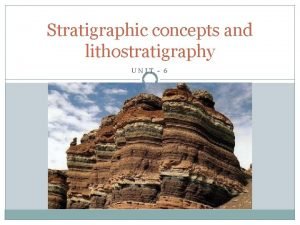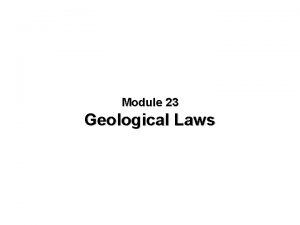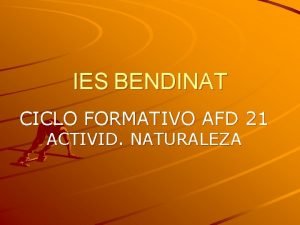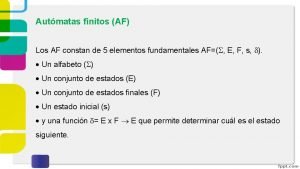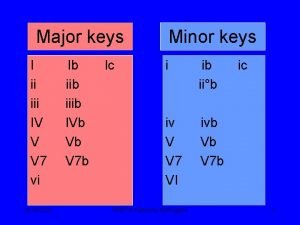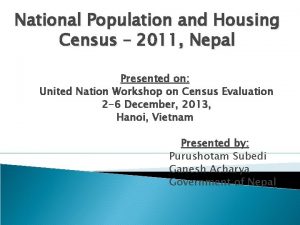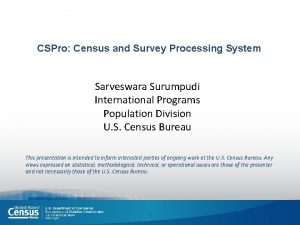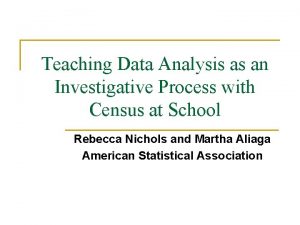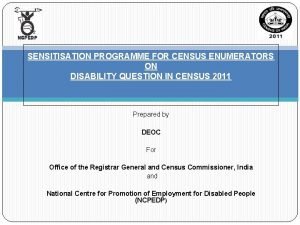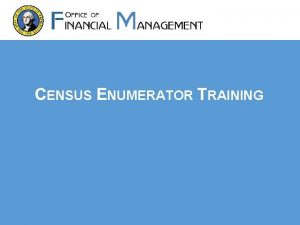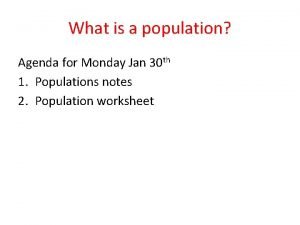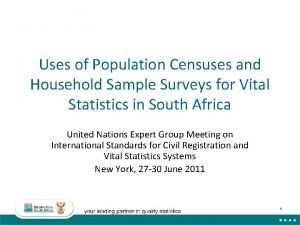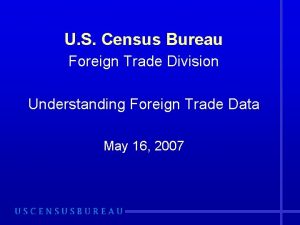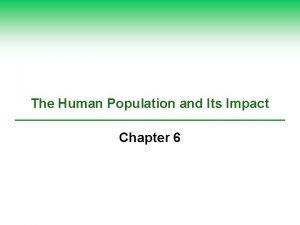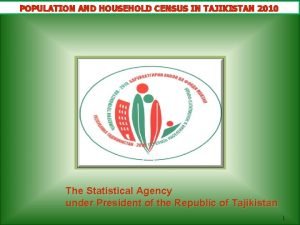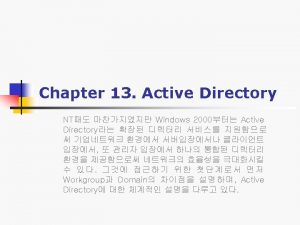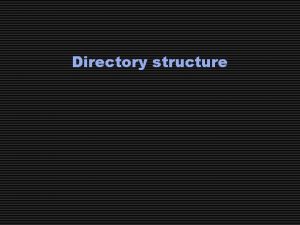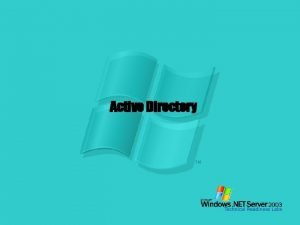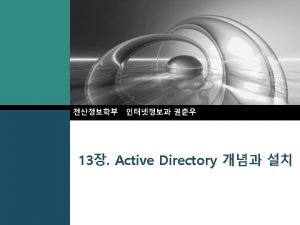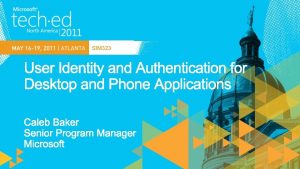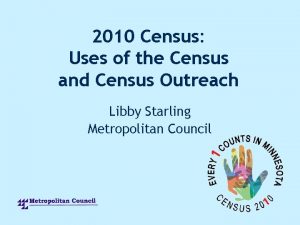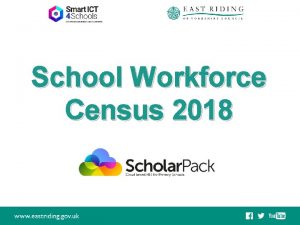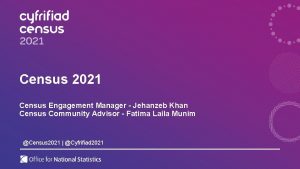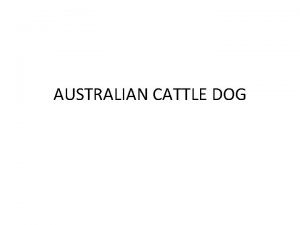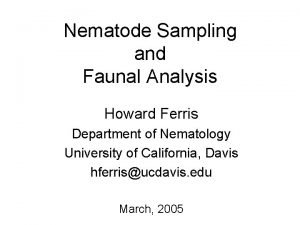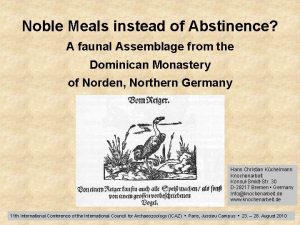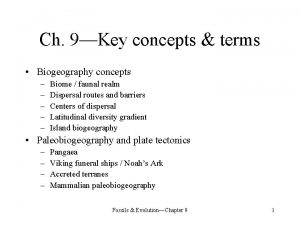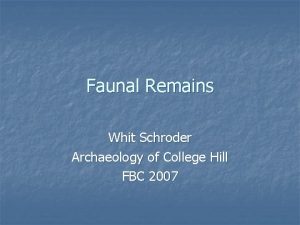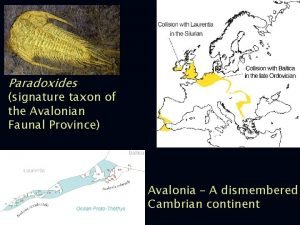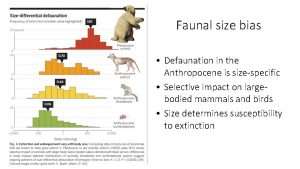Australian Faunal Directory AFD and Australian Plant Census























- Slides: 23

Australian Faunal Directory (AFD) and Australian Plant Census (APC): Content, Architecture and Services Documenting and delivering nomenclature and taxonomy for the Australian Fauna & Flora Greg Whitbread 1, Helen Thompson 2, Matthew Hand 3 1 Australian National Botanic Gardens, 2 Australian Biological Resources Study, 3 Answerz Pty Ltd Australian National Herbarium Australian National Botanic Gardens Australian Biological Resources Study

The Australian Faunal Directory (AFD), the Australian Plant Census (APC) and the Australian Plant Name Index (APNI) are the most complete information resources available online for the taxonomy and nomenclature of Australian plants and animals.

AFD and APNI/APC are of high quality, authoritative, and widely accepted as the single point of truth for these Australian taxa. They are to contribute a nomenclatural and taxonomic core for the Atlas of Living Australia (ALA).

. . . Housed within the Department of the Environment, Water, Heritage and the Arts (DEWHA) and maintained by the Australian Biological Resources Study (ABRS) and the Australian National Herbarium (CANB). APC operates under the auspices of CHAH (Council of Heads of Australasian Herbaria).

http: //www. anbg. gov. au/ibis

AFD Aims • 1. To include in a dynamic online database at least valid names of all species in the Australian fauna, and all of their synonyms. • 2. To provide outside access to specialists for updating of checklists, associated with a data-verification facility for ABRS staff. • 3. To make available downloads of names lists, records, and bibliographic details for sections as required by outside users. • 4. To conserve unique identifier codes. . So far: • Includes >75, 000 valid species names • In-house edits, immediately available online

AFD Editor

http: //www. environment. gov. au/apps/afd/home


Australian Plant Name Index (APNI) A Nomenclator Aims to capture all names (including misapplications, excluded names, names of uncertain placement, phrase names, autonyms, isonyms, etc) used in an Australian context All names and name usages are treated equally Presents information about plant names (e. g. author, date, publication, any nomenclatural status, etc) DOES NOT OFFER ANY TAXONOMIC OPINION

Australian Plant Census (APC) Taxonomic census Aims to present all names (as per APNI) in a taxonomic and nomenclatural context Names are not treated equally Layered over APNI PRESENTS A CONSENSUS TAXONOMIC OPINION

http: //www. cpbr. gov. au/apni/

http: //www. chah. org. au/apc

APNI/APC and AFD • Taxon (concept) based. . . • APNI = repository of nomenclatural usage and associated facts. small incremental changes, authoritatively coupled. Always upto-date • AFD = current concepts, comprehensive synonymy and profile detail. Requires revision to be up-to-date • APNI/APC + ABRS Flora-online = AFD • Simple services aimed at end user

TAXON NAME APNI REFERENCE RELATIONSHIP AFD TAXON ∞ Classifications One Classification REFERENCE NAME

In partnership with the ALA we are building the services required for distribution using TDWG standards. • TAPIR & TCS To deliver slices of the data set into client systems in a way that enables maintenance of data quality and update of extracts in place. • LSID & Date last modified For Names, Taxa, References and Images. . . platform for a collaborative infrastructure

The foundation for these services is a generic layer providing for • XML-RPC, SOAP and REST services to handle all of the protocols we are asked to support including • TAPIR, OAI-PMH, SRW/U, LSID and XQUERY and data models specified using the TDWG core ontology. Provide a path to participation in the Semantic Web.

Initial Iterations. . . XML Java framework to mimic the operation of existing providers implementing TAPIR to SQL translation over hibernate like mappings between provider objects and the underlying database. TCS not well suited to SQL processing and the resulting TAPIR solution demands considerable dedicated code for each service and data model supported. Little possibility of a generic solution.

Current iteration. . . e. Xist-DB - an XML database framework provides the required services, query processing and database layers The strong procedural capability of the XQUERY language and the ease with which TAPIR queries can be taken to XPATH expressions reduces TAPIR implementation to near declarative simplicity

In the EXIST service layer. . . Support for our mandatory protocols is pluggable using easy to write translation modules. Code is reduced to a minimum. All required services are bundled Semantic technologies supported Integrated XSLT capabilities for local content delivery.

Current Issues TCS over TAPIR. specify scope of return document local or external references Open source Common data store … TDWG ontology? evaluating CDM

. . . Current Issues AFD concept history multiple classifications TAXON REFERENCE NAME Rich client … high expectations of Plazi and EDIT Performance of XML data base Relational to XML transformation RELATIONSHIP

Acknowledgements • Department of the Environment, Water, Heritage and the Arts; – Australian Biological Resources Study • Director of National Parks – Australian National Herbarium – Australian National Botanic Gardens • National Collaborative Research Infrastructure Strategy • Atlas of Living Australia
 Stratigraphic principles
Stratigraphic principles Unconformity
Unconformity Principle of faunal succession
Principle of faunal succession Afd cfd
Afd cfd Afd 21
Afd 21 Los af
Los af Afd
Afd A major chord bank
A major chord bank National population and housing census 2011
National population and housing census 2011 What is cspro
What is cspro Tronsmo plant pathology and plant diseases download
Tronsmo plant pathology and plant diseases download Tronsmo plant pathology and plant diseases download
Tronsmo plant pathology and plant diseases download Tronsmo plant pathology and plant diseases download
Tronsmo plant pathology and plant diseases download Census at school random sampler
Census at school random sampler Census disability question
Census disability question In those days caesar augustus issued a decree
In those days caesar augustus issued a decree Our census our future
Our census our future Census enumerator training
Census enumerator training Http://www.census.gov/popclock/
Http://www.census.gov/popclock/ Sample or census
Sample or census Foreign trade division us census bureau
Foreign trade division us census bureau Http://www.census.gov/popclock/
Http://www.census.gov/popclock/ School workforce census 2017
School workforce census 2017 Census definition
Census definition
